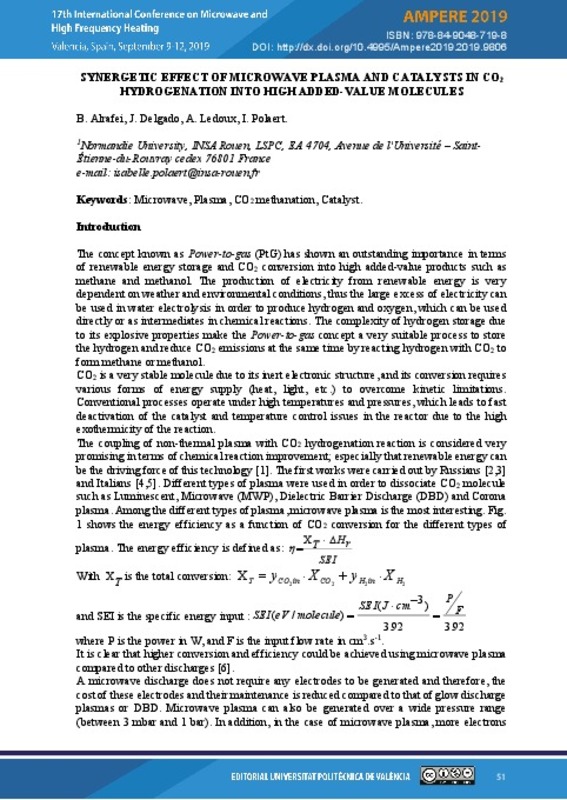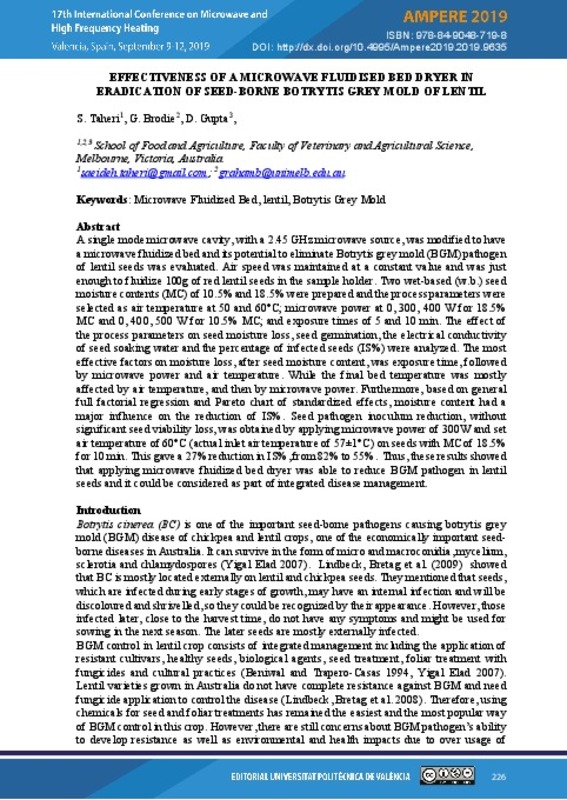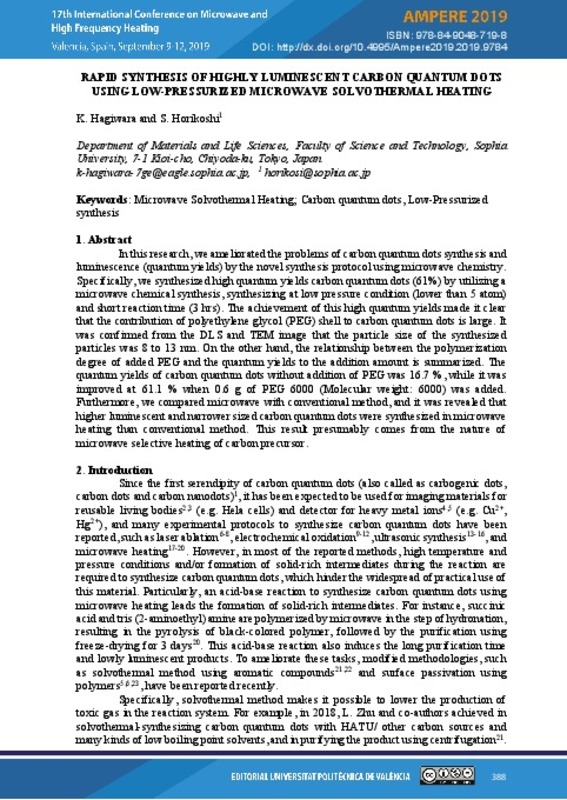JavaScript is disabled for your browser. Some features of this site may not work without it.
Buscar en RiuNet
Listar
Mi cuenta
Estadísticas
Ayuda RiuNet
Admin. UPV
A comparative study of microwave and barrier discharge plasma for the regeneration of spent zeolite catalysts
Mostrar el registro sencillo del ítem
Ficheros en el ítem
| dc.contributor.author | Halman, A.
|
es_ES |
| dc.contributor.author | Bond, Gary
|
es_ES |
| dc.contributor.author | Eccles, H.
|
es_ES |
| dc.contributor.author | Mao, R.
|
es_ES |
| dc.contributor.author | Pollington, S.
|
es_ES |
| dc.contributor.author | Hinde, P.
|
es_ES |
| dc.contributor.author | Demidyuk, V.
|
es_ES |
| dc.contributor.author | Gkelios, A.
|
es_ES |
| dc.date.accessioned | 2019-11-11T13:28:48Z | |
| dc.date.available | 2019-11-11T13:28:48Z | |
| dc.date.issued | 2019-10-15 | |
| dc.identifier.isbn | 9788490487198 | |
| dc.identifier.uri | http://hdl.handle.net/10251/130719 | |
| dc.description.abstract | [EN] Due to their acid characteristics and pore structure, which can induce high product selectivity; zeolite catalysts are used extensively in industry to catalyse reactions involving hydrocarbons. However, these catalysts can suffer from deactivation due to cracking reactions that result in the deposition of carbon leading to poisoning of the acid sites and blocking of the pores [1]. Depending upon the reaction and the particular catalyst involved this deactivation may take place over several months or even years but in some cases occurs in minutes. Therefore, zeolite catalysts are frequently reactivated / regenerated. This generally involves a thermal treatment involving air which results in oxidation of the carbon [2]. However, the oxidation of carbon is highly exothermic, and if not carefully controlled, results in the generation of exceedingly high localized temperatures which can destroy the zeolite structure and result in subsequent loss of catalyst activity. More conservative thermal treatments can result in incomplete regeneration and again a catalyst displaying inferior activity. This paper explores the use of non-thermal plasma which had been either generated using microwaves or via a barrier discharge to regenerate spent zeolite catalysts. The catalyst, H-mordenite, was tested for the disproportionation of toluene (Figure 1) using conventional heating. The spent catalyst was then regenerated using a plasma or conventional thermal treatment before having its activity re-evaluated for the toluene disproportionation reaction as previous. Fig. 1. Reaction Scheme for Toluene Disproportionation. Interestingly, not only is plasma regeneration highly effective but also catalysts can be regenerated in greatly reduced times. There is an additional advantage in that plasma regeneration can impart physical properties that result in a zeolite that is resistant to further deactivation. However, the results are highly dependent upon the experimental conditions involved for plasma regeneration. References Wu J, Leu L., Appl. Catal., 1983; 7:283-294. M. Guisnet and P. Magnoux, Deactivation of Zeolites by Coking. Prevention of Deactivation and Regeneration. In: Zeolite Microporous Solids: Synthesis, Structure, and Reactivity. E.G. Derouane, F Lemos, C. Naccache, F. Ramôa Ribeiro, Eds. Pages 437-456. Springer 1992. | es_ES |
| dc.format.extent | 8 | es_ES |
| dc.language | Inglés | es_ES |
| dc.publisher | Editorial Universitat Politècnica de València | es_ES |
| dc.relation.ispartof | AMPERE 2019. 17th International Conference on Microwave and High Frequency Heating | es_ES |
| dc.rights | Reconocimiento - No comercial - Sin obra derivada (by-nc-nd) | es_ES |
| dc.subject | Energy Production by Microwaves | es_ES |
| dc.subject | Microwave CVD | es_ES |
| dc.subject | EM Modelling | es_ES |
| dc.subject | Microwave Material interaction | es_ES |
| dc.subject | Dielectric Properties | es_ES |
| dc.subject | Dielectric Properties Measurement | es_ES |
| dc.subject | Solid State Microwave | es_ES |
| dc.subject | Microwave Processing | es_ES |
| dc.subject | Microwave Chemistry | es_ES |
| dc.subject | Microwave applicators design | es_ES |
| dc.title | A comparative study of microwave and barrier discharge plasma for the regeneration of spent zeolite catalysts | es_ES |
| dc.type | Capítulo de libro | es_ES |
| dc.type | Comunicación en congreso | es_ES |
| dc.identifier.doi | 10.4995/AMPERE2019.2019.9936 | |
| dc.rights.accessRights | Abierto | es_ES |
| dc.description.bibliographicCitation | Halman, A.; Bond, G.; Eccles, H.; Mao, R.; Pollington, S.; Hinde, P.; Demidyuk, V.... (2019). A comparative study of microwave and barrier discharge plasma for the regeneration of spent zeolite catalysts. En AMPERE 2019. 17th International Conference on Microwave and High Frequency Heating. Editorial Universitat Politècnica de València. 469-476. https://doi.org/10.4995/AMPERE2019.2019.9936 | es_ES |
| dc.description.accrualMethod | OCS | es_ES |
| dc.relation.conferencename | Ampere 2019 | es_ES |
| dc.relation.conferencedate | Septiembre 09-12,2019 | es_ES |
| dc.relation.conferenceplace | Valencia, Spain | es_ES |
| dc.relation.publisherversion | http://ocs.editorial.upv.es/index.php/AMPERE2019/AMPERE2019/paper/view/9936 | es_ES |
| dc.description.upvformatpinicio | 469 | es_ES |
| dc.description.upvformatpfin | 476 | es_ES |
| dc.type.version | info:eu-repo/semantics/publishedVersion | es_ES |
| dc.relation.pasarela | OCS\9936 | es_ES |
Este ítem aparece en la(s) siguiente(s) colección(ones)
-
Ampere 2019 [66]











